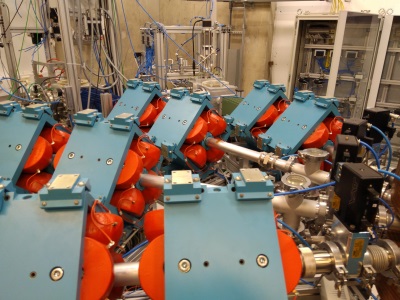PET tracer

Tracer is a positron emitting isotope labeled molecule, molecular probe, that is either structurally related to the natural substrate (tracee) or involved in the dynamic process.
Administering only trace amounts (i.e. with a high specific activity) ensures that radiopharmaceutical (radioligand) does not cause any unintentional pharmacological or systemic effects. The system needs to be kept in dynamic equilibrium during the PET study, so that the only thing that is changing is the concentration and distribution of our radiopharmaceutical. When this is the case, then the processes can be described with first-order rate constants, and we can calculate results using usual mathematical methods.
Trace amount
Tracer is introduced to system in a trace amount:
- Low mass (high specific activity)
- Amount of tracer is at least a couple of orders of magnitude smaller than the tracee
- Process being measured is not perturbed by it
- Less than 5% of receptor is occupied by tracer.
Higher than tracer doses
Higher radioligand masses can be intentionally administered in certain study protocols, for example to measure receptor Bmax and KD separately.
See also:
- Selecting PET radiopharmaceutical
- Dynamic processes
- Compartmental models
- Analysis instructions by radiopharmaceutical
- PET data
References:
Huang SC., Carson R.E., Phelps M.E. (1983) Tracer Kinetic Modeling in Positron Computed Tomography. In: Lambrecht R.M., Rescigno A. (eds.) Tracer Kinetics and Physiologic Modeling. Lecture Notes in Biomathematics, vol 48. Springer, Berlin, Heidelberg. doi: 10.1007/978-3-642-50036-7_6.
Tags: Tracer, Specific activity, SA, Rate constant, Modeling
Updated at: 2019-03-24
Created at: 2013-12-20
Written by: Vesa Oikonen